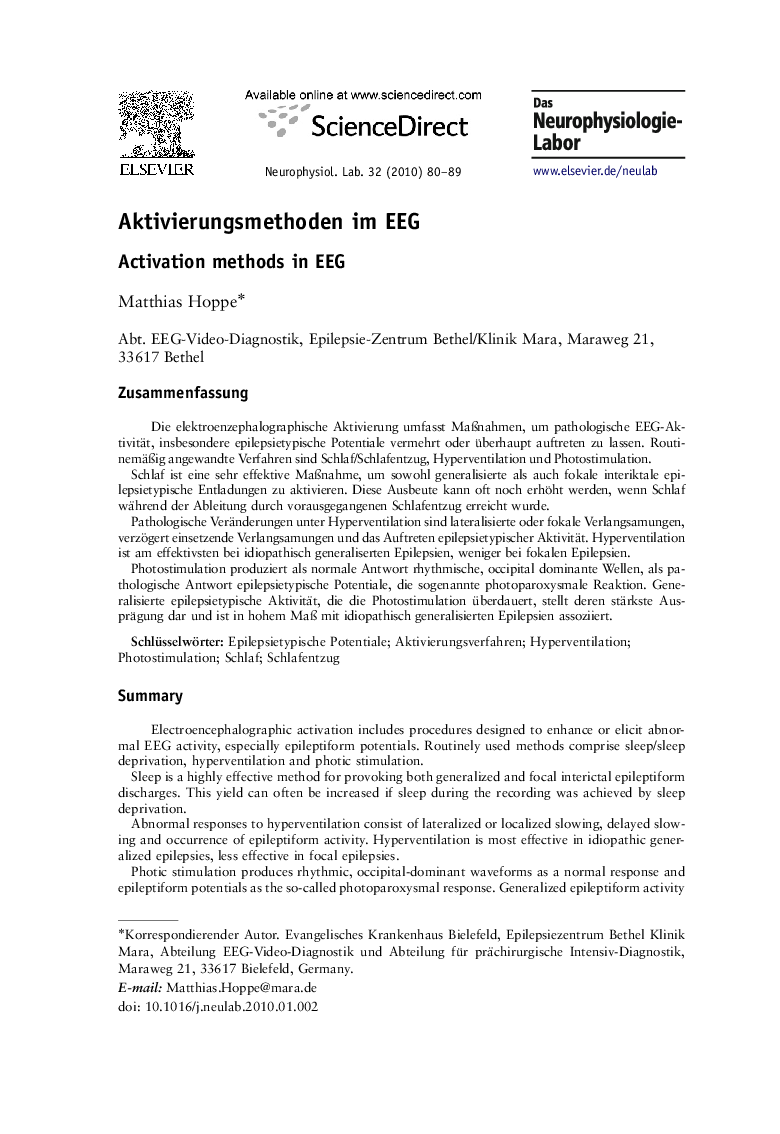| Article ID | Journal | Published Year | Pages | File Type |
|---|---|---|---|---|
| 2680623 | Das Neurophysiologie-Labor | 2010 | 10 Pages |
ZusammenfassungDie elektroenzephalographische Aktivierung umfasst Maßnahmen, um pathologische EEG-Aktivität, insbesondere epilepsietypische Potentiale vermehrt oder überhaupt auftreten zu lassen. Routinemäßig angewandte Verfahren sind Schlaf/Schlafentzug, Hyperventilation und Photostimulation.Schlaf ist eine sehr effektive Maßnahme, um sowohl generalisierte als auch fokale interiktale epilepsietypische Entladungen zu aktivieren. Diese Ausbeute kann oft noch erhöht werden, wenn Schlaf während der Ableitung durch vorausgegangenen Schlafentzug erreicht wurde.Pathologische Veränderungen unter Hyperventilation sind lateralisierte oder fokale Verlangsamungen, verzögert einsetzende Verlangsamungen und das Auftreten epilepsietypischer Aktivität. Hyperventilation ist am effektivsten bei idiopathisch generaliserten Epilepsien, weniger bei fokalen Epilepsien.Photostimulation produziert als normale Antwort rhythmische, occipital dominante Wellen, als pathologische Antwort epilepsietypische Potentiale, die sogenannte photoparoxysmale Reaktion. Generalisierte epilepsietypische Aktivität, die die Photostimulation überdauert, stellt deren stärkste Ausprägung dar und ist in hohem Maß mit idiopathisch generalisierten Epilepsien assoziiert.
SummaryElectroencephalographic activation includes procedures designed to enhance or elicit abnormal EEG activity, especially epileptiform potentials. Routinely used methods comprise sleep/sleep deprivation, hyperventilation and photic stimulation.Sleep is a highly effective method for provoking both generalized and focal interictal epileptiform discharges. This yield can often be increased if sleep during the recording was achieved by sleep deprivation.Abnormal responses to hyperventilation consist of lateralized or localized slowing, delayed slowing and occurrence of epileptiform activity. Hyperventilation is most effective in idiopathic generalized epilepsies, less effective in focal epilepsies.Photic stimulation produces rhythmic, occipital-dominant waveforms as a normal response and epileptiform potentials as the so-called photoparoxysmal response. Generalized epileptiform activity outlasting the photic stimulation represents the strongest degree of the photoparoxysmal response and is highly associated with idiopathic generalized epilepsies.
